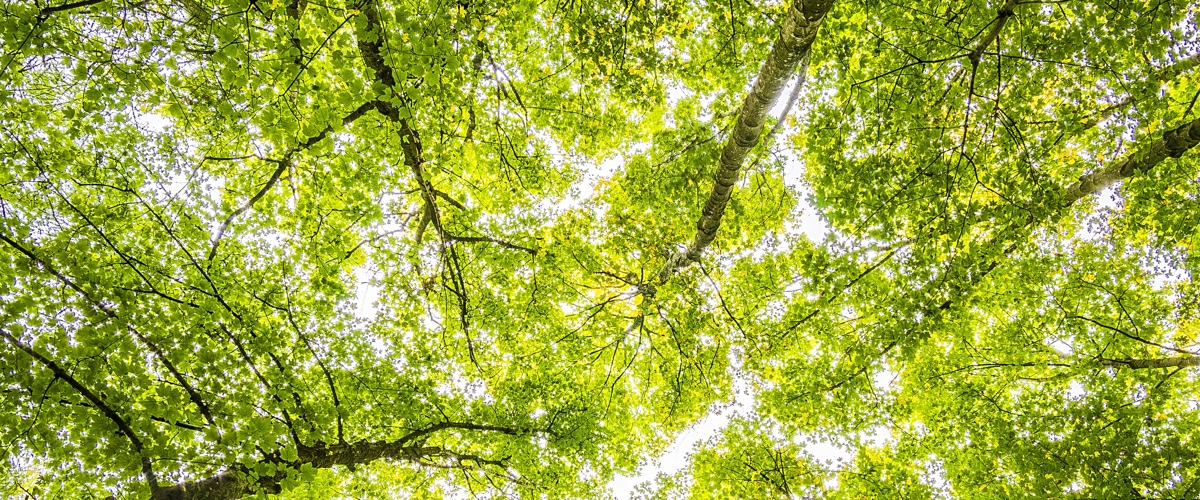FST BLOG
Natural Climate Solutions: The Risk of not seeing the Forest for the Trees
- 23 September 2020
- Environment
- Ellen Taylor

Of all the policies proposed to tackle the climate crisis, tree-planting is probably the least controversial. Actors across the global climate regime, including those who regularly find themselves at odds, have embraced afforestation as a simple and relatively low-cost way to mitigate climate change. In their Sky Scenario report, fossil fuel company Shell suggest that warming might be limited to 1.5 degrees through the reforestation of an area the size of Brazil. The company works with a number of partners, including the Scottish government, in tree-planting projects around the world. In 2019, Extinction Rebellion created a forest of potted native saplings outside the Houses of Parliament, in an effort to encourage government support for reforestation both in the UK and overseas. Outlining his first budget in March, Chancellor of the Exchequer Rishi Sunak pledged to plant enough trees to cover an area ‘larger than Birmingham’ over the next five years.
Simply put, everyone seems to love trees – and why shouldn’t they? Forests act as carbon sinks, sequestering and storing carbon dioxide, which in turn reduces the concentration of carbon dioxide in the atmosphere. They form a central part of the approaches that have come to be known as natural climate solutions – those that embrace the restoration, conservation, and management of ecosystems such as forests, wetlands, and grasslands. The preservation of such ecosystems allows for the storage of carbon, and preventing their destruction allows for the avoidance of further greenhouse gas emissions. Indeed, a prominent recent study found that natural climate solutions have the potential to account for over one third of the necessary mitigation to keep warming below the 2 degrees target outlined in the 2015 Paris Agreement.
Afforestation – one of the most prominent natural climate solutions – also has important and well-documented co-benefits. Forests improve biodiversity and provide habitats for vulnerable species. They perform important ecosystem services, such as reducing soil degradation and flood risk, and improving food security. Studies of trees in urban areas have highlighted the important and often unexpected roles they can play in improving human mental and physical health. For example, simply having a view of nature when recovering from surgery in hospital is thought to aid recovery. Planting trees as a part of climate policy appears to have few drawbacks.
Yet, the problem arises when tree-planting moves from being simply a part of climate policy, to being at its centre, unsupported by concrete action towards absolute emission reductions. There is a risk of mitigation deterrence – where through promising the removal of atmospheric carbon in the future, we might continue, or even increase, current levels of emissions. Doing this is certainly easier than radically transforming the current global economy. It is likely to be a more popular approach amongst the most powerful actors in the global climate regime, many of whom constitute the biggest emitters, the holders of the most unsustainable capital, for whom deferring the devaluation of such capital into the future makes greater financial sense in the present day.
Not only does the centring of natural climate solutions in climate policy help to create a narrative in which reductions in absolute emissions might be deferred, but the foundation on which it does so is weak. It is based on little more than assumptions, often at the expense of social reality. Natural climate solutions often require the use of vast swathes of land, limiting that available for other uses such as agriculture or housing. From a global perspective, the risks of an overemphasis on natural climate solutions are even more stark. At least 36% of the intact forest landscapes most valuable for preservation lie in Indigenous people’s lands. An overreliance on natural climate solutions to mitigate climate change can threaten the land rights of such peoples. In the past, this has led to so-called ‘fortress conservation’ - projects based on the exclusion of humans from ecosystems in order to preserve them – often leading to forced evictions with no regard for Indigenous rights, lifestyles, or environmental knowledges. Indeed, in Shell’s report in which they laud the potential of natural climate solutions, a few small words offer a glimpse behind the façade of certainty – ‘if social barriers can be overcome’. ‘If’ – a small word, an afterthought, with huge implications for mitigation.
Recently, back in the UK, the government failed to meet their current afforestation target by 71%, and quietly extended it, pushing their goal from 2020 to 2022. Meanwhile, their so-called ‘green recovery’ plan fails to mention the millions of pounds spent on unconditional grants to the aviation industry in the wake of the pandemic. The illusion of certainty created by an overreliance on natural climate solutions and offsetting of carbon dioxide enables such contradictions, even as their mask of feasibility seems to slip.
The universal popularity of trees means that afforestation and forest preservation policies make for excellent public relations exercises. They make for quaint photo opportunities of smiling politicians armed with spades and saplings. But, without concrete and immediate action to reduce absolute emissions, they offer little more than this by way of climate change mitigation. If we want a planet on which current ecosystems can thrive, we need to strip the greenwash from climate policy by demanding immediate and tangible change. We need to demand policy that diverts funds from the most unsustainable industries to those that invest in our shared future. It may not make for good photographs for politicians, but the future of our planet depends on it.
Ellen Taylor is a student of MSc Global Development at the University of Copenhagen. A graduate of BA Archaeology and Anthropology at the University of Oxford, her interests include the anthropology of sustainability and climate change, international development, and climate justice.
